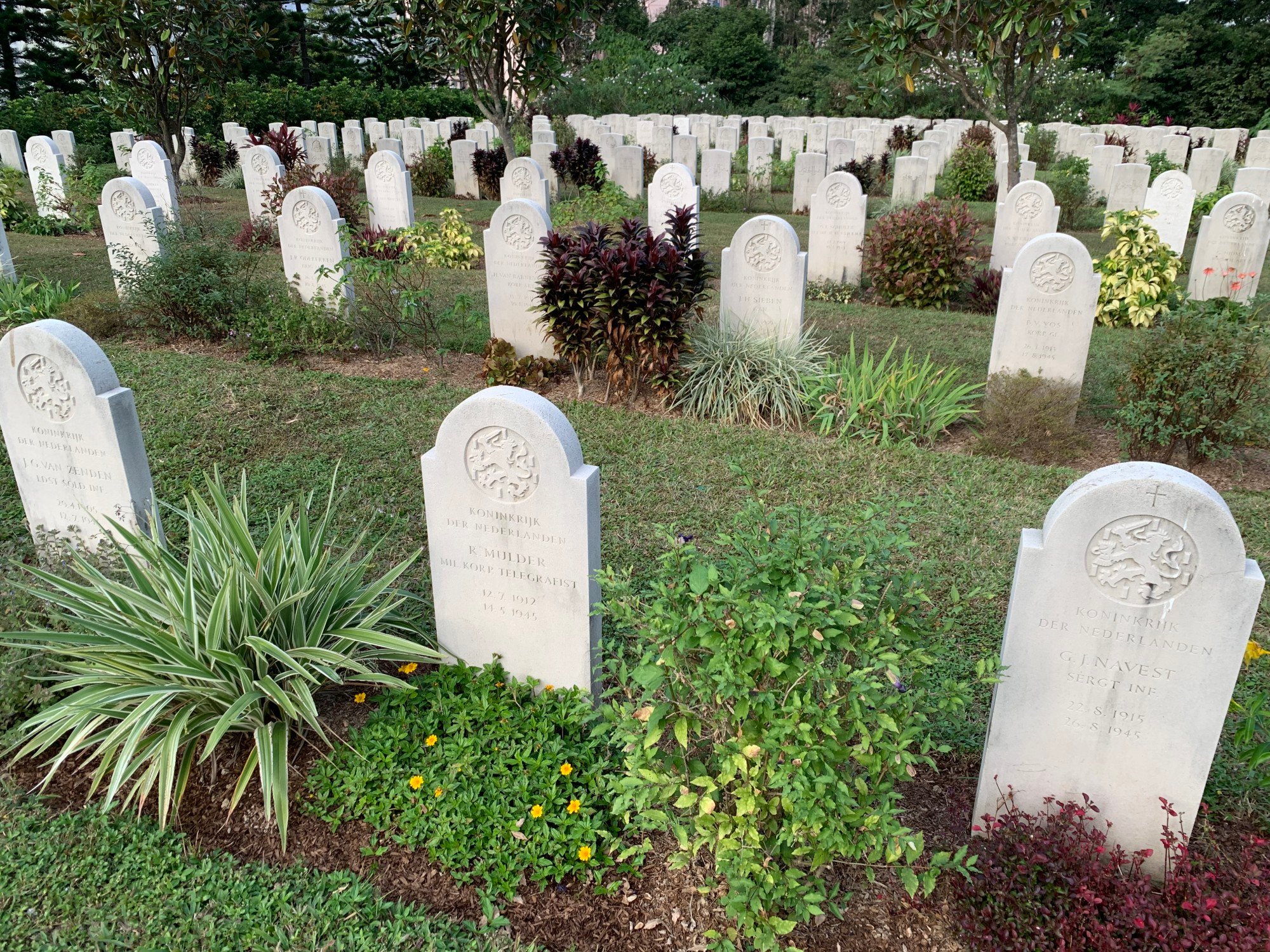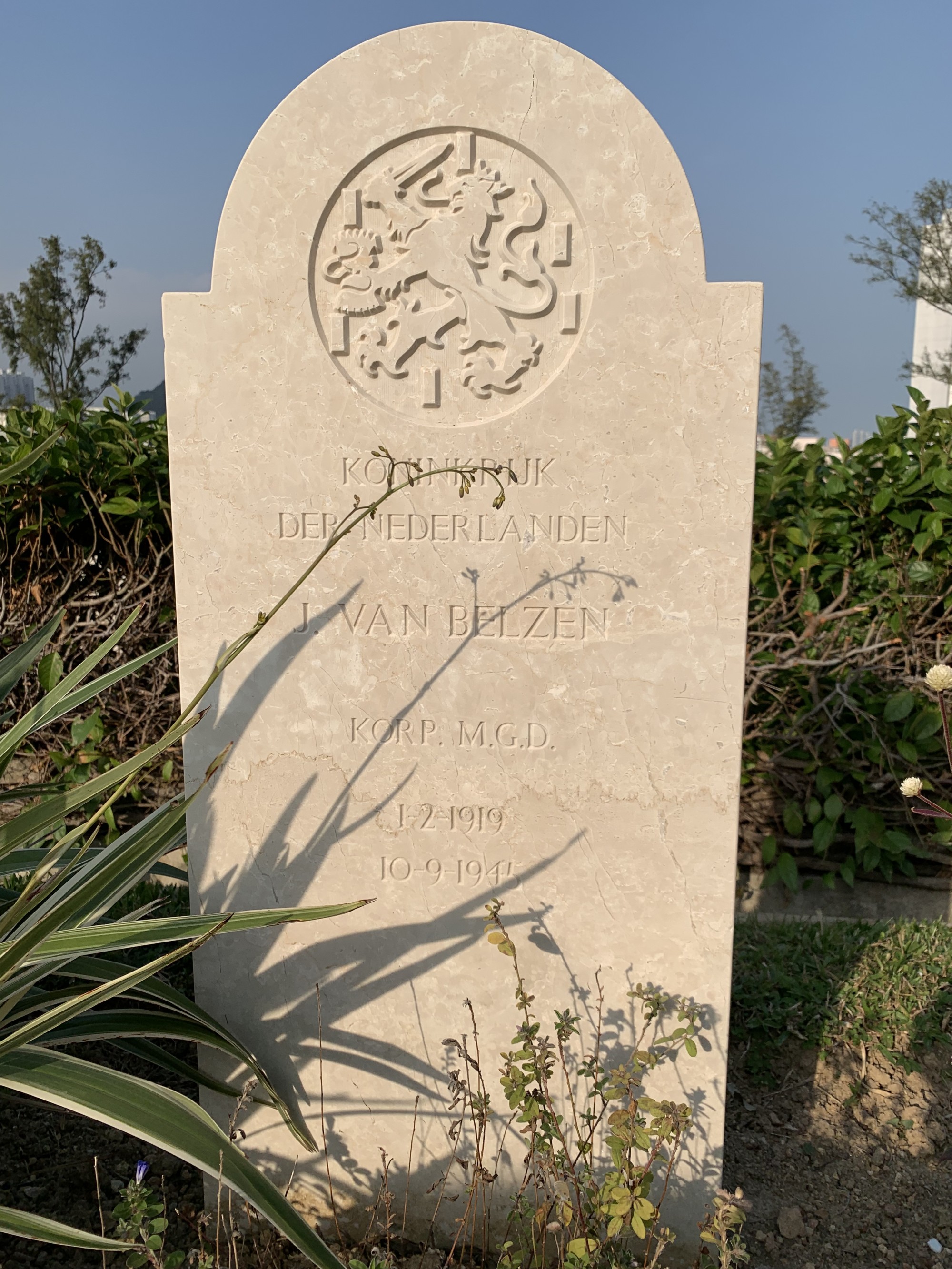
Unearthing stories of bravery, camaraderie and tragedy of 72 courageous Dutch World War II soldiers buried in Hong Kong
- Most of the soldiers died in Hainan POW camp after their capture in Indonesia
- They struggled through brutal treatment in the camp with malnutrition and disease being most likely cause of death
The Sai Wan War Cemetery in Hong Kong is the final resting place for 1,528 Commonwealth soldiers who died during World War II, with most of the graves belonging to British, Indian, and Canadian service members who died during the Battle of Hong Kong or in subsequent POW camps.
But the military cemetery is also the final resting place of 72 Dutch soldiers, none of whom died during that defining moment in the city’s history, with only two of them dying in Hong Kong itself, according to a new study published in the Journal of the Royal Asiatic Society Hong Kong.
The vast majority – 55 of them – died at a Japanese prisoners-of-war (POW) camp on Hainan Island in southern China. An additional 10 soldiers died in Taiwan POW camps, while four died in a plane crash off the island. The two deaths in Hong Kong were unrelated to the Battle of Hong Kong, and one soldier died on a hospital ship.
“The major takeaway was realising the 72 Dutch buried at Hong Kong’s Sai Wan War Cemetery were not related to the Battle of Hong Kong but instead related to lesser-known engagements and events during the Pacific War,” said Justin Ho, a history researcher and author of the study.
What did emerge was remarkable tales of bravery, camaraderie, and tragic irony for soldiers put under unimaginably difficult circumstances.

The soldiers that died in Hainan were captured during the Battle of Ambon (January 30 – February 3, 1942), a Japanese offensive in which they captured Ambon Island and its strategic airbase in a matter of days. The captured Allied soldiers were transported to the Hachow POW camp in Hainan.
In one of the more remarkable stories from Hainan, a group of six soldiers escaped the camp and attempted to flee the island for mainland China. The group – Bout, Brussel, Koomans, Navest, Soeters and Wisman – bribed a Chinese man with a Red Cross package to take them off Hainan Island.
According to a Dutch newspaper interview with Bout’s nephew, the smuggler betrayed the soldiers to the Japanese, who recaptured them and returned them to the camp. It is presumed the soldiers were executed for the escape attempt, but the exact details of their fate remain unknown.
“Escaping from Hainan Island was difficult. This was why, by 1945, escapees would head for Chinese guerrilla-occupied territories on Hainan Island for better chances of aid and survival,” Ho told the Post.
Most of the deaths at Hachow were not as dramatic as the escape attempt, and their fate was primarily the result of horrendous living conditions.
The Japanese soldiers restricted the POWs’ food, vitamins and medicine. They did not provide clothes, and soldiers would occasionally steal POWs’ private possessions. On top of this, the Japanese forced the POWs to perform forced labour between 1942-1945, building roads and airfields on Hainan.
This poor treatment – coupled with widespread vermin, flies and mosquitoes – led to outbreaks of disease, and 55 of the Dutch soldiers died of dysentery or beriberi.
“From what I researched, the Dutch POWs suffered the same hardships as many other Allied POWs – brutal treatment by the Japanese, forced labour, malnutrition and tropical diseases,” said Ho.
Two soldiers at Hachow stood out for their bravery and duty. Hendrik van Barneveld and Johannes Renier Odekerken would die as the war came to an end, missing the camp’s liberation by a few months. But before their death, they had helped facilitate a successful escape of their comrades, serving as lookouts.
“One of the POW escapees, A. J. von Metzsch, later published his diary and acknowledged their brave efforts,” said Ho.
In September 1945, the Hachow camp was liberated, and the surviving POWs were first sent to Sanya air base on Hainan for treatment before being transferred to either Sydney, Australia or Hong Kong.

As for the other 17 Dutch soldiers, the Japanese captured them during a wide variety of conflicts in the Pacific theatre. In Taiwan, the soldiers faced similarly dire circumstances as those in Hainan, with diseases and malnutrition causing their deaths.
Only one Dutch soldier, Jacob van Steenwijk, died in Hong Kong while in captivity. He was captured after surviving a Japanese attack on his submarine and subsequently interrogated in Vietnam for seven days.
Van Steenwijk was then transported to Hong Kong, where he spent his remaining days between the North Point POW Camp and the Sham Shui Po POW Camp.
The other soldier to die in Hong Kong was Fokke Algera, who died in the immediate aftermath of Japan’s surrender. A POW diary from another soldier suggested Algera died from refeeding syndrome, or eating too rapidly after a period of undernutrition. However, the details of Algera’s internment are obscure, and the truth of his story is murky at best.
One particularly sad story is the fate of four soldiers who were captured in Java, Indonesia, and then transferred to a POW camp in Tokyo, where they survived until the end of the war.
After liberation, the soldiers were headed to the Philippines for repatriation, but stormy weather caused their plane to crash into Taiwan’s Hai’an Mountain range, killing all 25 people on board. One of the soldiers, Job van Belzen, had kept a meticulous diary and expressed his excitement to return home to his family.
Despite little connection to the city, the Dutch soldiers were buried in Hong Kong because of its colonial history. When Japan surrendered control of the Dutch East Indies (modern-day Indonesia), the US transferred the country’s post-war management responsibilities to the British, so the British military was charged with recovering POWs as well as finding and identifying war graves.
“Hence, at that time, it was not surprising that the British would have treated other Allied war dead like their own and reinterred them in neighbouring colonies such as Hong Kong and Singapore,” said Ho.
Today, the memories of the soldiers are remembered every May 4 in Hong Kong, and some of the soldiers’ hometowns have erected memorial sites.
“Continuing such traditions and efforts can help understand this part of a forgotten history,” said Ho.

